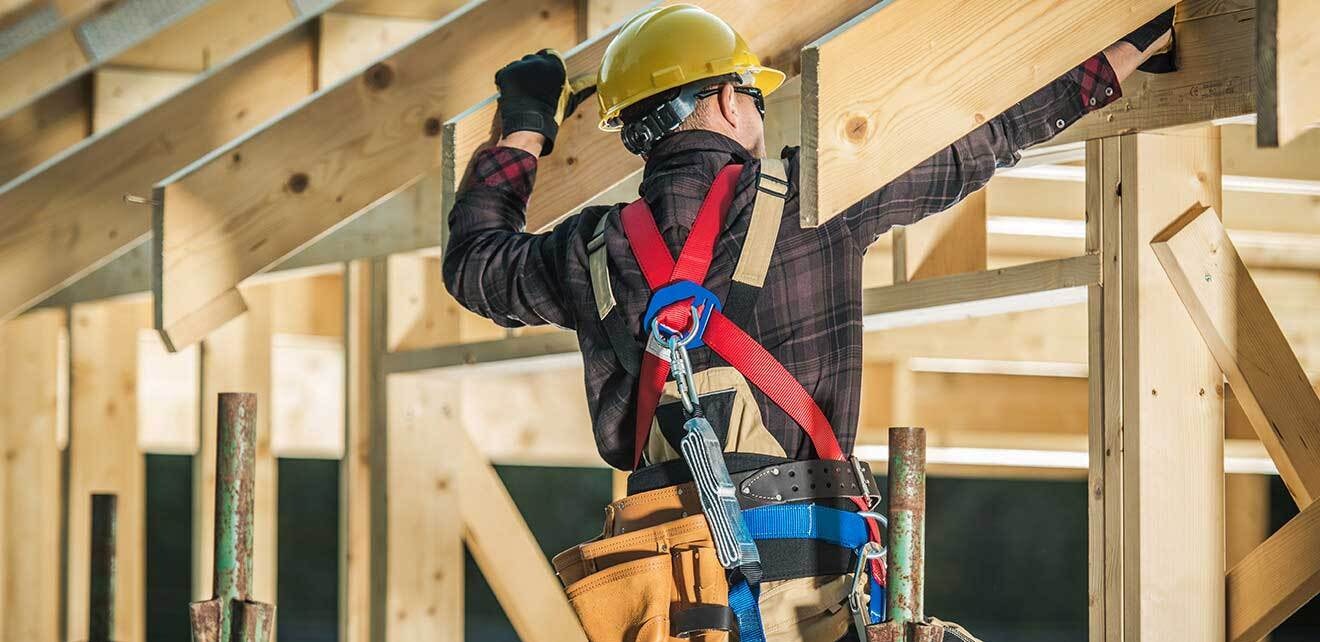Home > Blog
Read Time — 5 minutes
New Home Construction Project Over Budget? 7 Ways to Keep it Profitable

More often than contractors like to admit, cost overruns are a fact of life with new residential construction. Even when everything seems to be going well, unplanned expenses and delays can ambush your job, drag it behind schedule and push it over budget.
But you can keep unnecessary costs at bay by applying the principles of Lean Construction. Let’s get into seven ways Lean Construction can help you stay on budget and in the black.
Lean Construction Emphasizes Quality and Efficiency
Lean Construction evolved from the principles and practices of lean manufacturing, which has helped many companies put out better quality products while lowering costs. While building projects operate differently from manufacturing, the concepts have been adapted for large and small construction businesses.
At a high level, the principles are designed to keep your team focused on quality and efficiency. Companies that practice Lean Construction try to ensure that every activity moves the project forward without delays, work stoppages or re-work.
To realize the benefits of Lean Construction, find ways to keep jobs moving smoothly from phase to phase and weed out any work that adds cost without value. Also, consider deploying software solutions to automate tedious tasks and help you plan more effectively.
Here are some ways to get started:
1. Increase Scheduling Efficiency
Employees represent a healthy percentage of your costs. You need to ensure each job site has the right set of people on it.
And the crew needs to know when and where they’re expected to be. Otherwise, people will show up at the wrong place or the job sites won’t be ready for them, and the unproductive expenses will stack up.
Use smart technology to help you schedule efficiently. A solution like Bolt Software will show you the status of current projects and dates for upcoming work. It also includes reports that help you manage crew at each site.
2. Keep Crew on Task
The basic principles of Lean Construction include keeping everyone focused on value-added activity. But even the hardest working team can’t make progress if they don’t have a clear set of tasks.
Good Lean Construction managers ensure each person has a clear plan of action at the start of each day. And if anything changes, they communicate new plans or priorities immediately.
Here’s another area where mobile technology makes lean management easier. With a mobile solution, you can send out task lists, checklists, work orders and change orders to anyone, anywhere.
Everyone knows what they need to be working on and what to do next, even if the objectives change in the middle of a project. Supervisors can track how each job is progressing and handle problems immediately if necessary.
3. Manage Materials Accurately
In order for a project to progress smoothly, the crew needs the right materials to start with. If you underestimate what you’ll need or if the requirements change, you may end up having to make extra trips for additional supplies. Meanwhile, work is delayed.
Lean Construction companies follow a data-based process for materials management to ensure every crew has what they need when they need it. You can do the same with software that tracks the supplies used for each job and helps you estimate future job requirements more accurately.
4. Leave Paperwork in the 20th Century
Every job generates reams of paperwork, and if you’re handling it all manually, you’re spending hours every week just keeping everything in order, looking for lost papers, or calling around to find out who has the document you need. None of that effort is moving the project forward.
Clear paperwork out of your schedule with mobile document storage. Folders turn into digital files anyone can access from anywhere. And the paper chase becomes “so last century.”
5. Resolve Disputes Quickly
Every good supervisor tries to avoid disagreements with the builder, but there are times when each party has a different opinion of what happened. If you don’t have photos or videos recording the work status at each point, you may waste time resolving disputes, getting change orders approved or getting paid for jobs.
Follow the Lean Construction best practice of keeping a history of the work you’ve done at each phase. Look for mobile document management that makes it easy to add photos and videos from any connected device just by dragging and dropping.
Help your crews get into the habit of quickly recording every step. If disputes arise, you have the documentation to resolve them quickly and get back to productive work.
6. Simplify Business Processes
Some documents, like work orders, change orders and invoices must be sent to or collected from the builder for work to proceed.
Today, you may spend time manually creating invoices or driving to and from the builder for approvals, but a Lean Construction company will find more efficient ways to handle these tasks.
For example, you can deploy a management solution designed for residential construction that automates work orders and invoices. Bolt Software integrates with builder systems to send work orders automatically (huge time saver). It also coordinates with QuickBooks to generate invoices from crew hours and materials lists.
7. Build a Culture of Continuous Improvement
Aside from cutting waste, Lean Construction companies look for ways to improve every day. Ideally, once projects start to run more efficiently, you can empower everyone in the company to innovate.
The field crew may have a brainstorm about ways to save materials. Or supervisors may have ideas about how to improve communication. When your company isn’t distracted by activities that waste time, you can try out new proposals and tune your business into a high-performance machine.
Get Started by Learning More
Want to start incorporating Lean Construction methodologies into your residential construction business? Contact us to see how newer technology Lean Construction principles can be applied to your daily project management operations.


